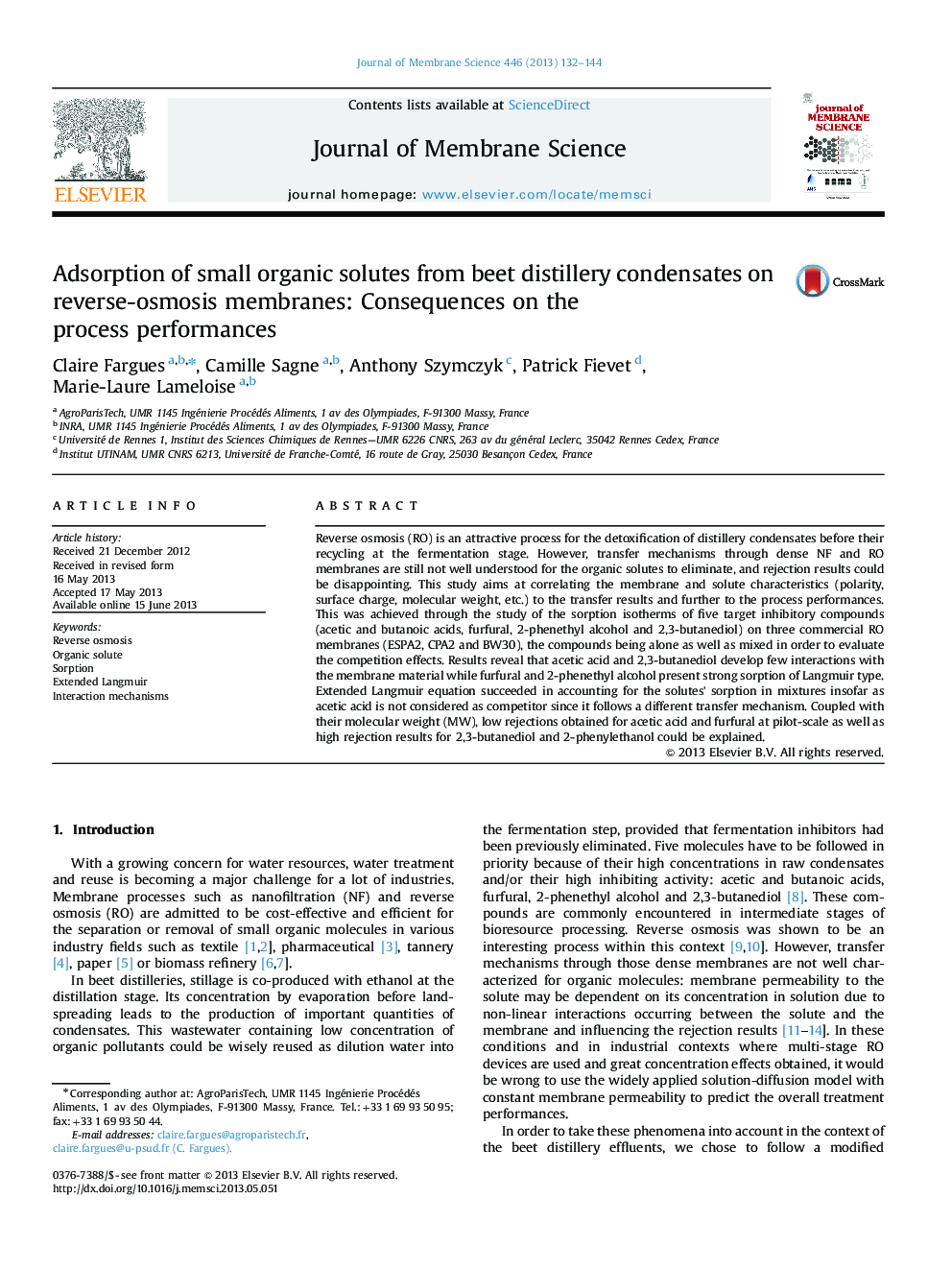| Article ID | Journal | Published Year | Pages | File Type |
|---|---|---|---|---|
| 634043 | Journal of Membrane Science | 2013 | 13 Pages |
Abstract
Reverse osmosis (RO) is an attractive process for the detoxification of distillery condensates before their recycling at the fermentation stage. However, transfer mechanisms through dense NF and RO membranes are still not well understood for the organic solutes to eliminate, and rejection results could be disappointing. This study aims at correlating the membrane and solute characteristics (polarity, surface charge, molecular weight, etc.) to the transfer results and further to the process performances. This was achieved through the study of the sorption isotherms of five target inhibitory compounds (acetic and butanoic acids, furfural, 2-phenethyl alcohol and 2,3-butanediol) on three commercial RO membranes (ESPA2, CPA2 and BW30), the compounds being alone as well as mixed in order to evaluate the competition effects. Results reveal that acetic acid and 2,3-butanediol develop few interactions with the membrane material while furfural and 2-phenethyl alcohol present strong sorption of Langmuir type. Extended Langmuir equation succeeded in accounting for the solutes' sorption in mixtures insofar as acetic acid is not considered as competitor since it follows a different transfer mechanism. Coupled with their molecular weight (MW), low rejections obtained for acetic acid and furfural at pilot-scale as well as high rejection results for 2,3-butanediol and 2-phenylethanol could be explained.
Related Topics
Physical Sciences and Engineering
Chemical Engineering
Filtration and Separation
Authors
Claire Fargues, Camille Sagne, Anthony Szymczyk, Patrick Fievet, Marie-Laure Lameloise,
